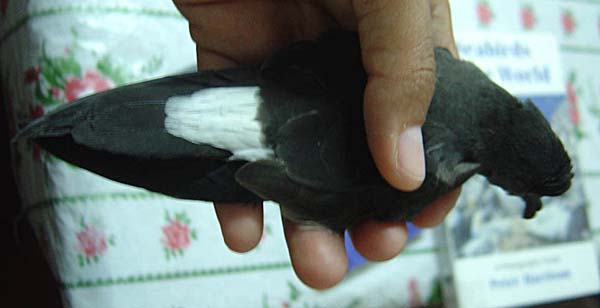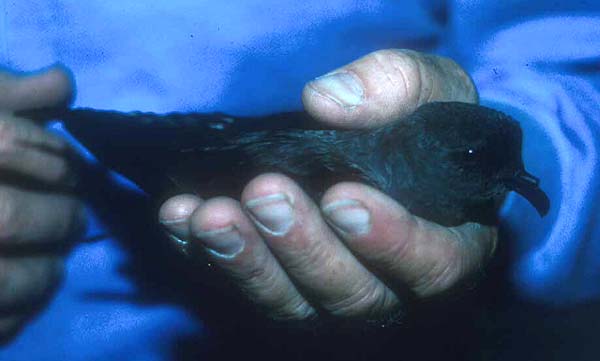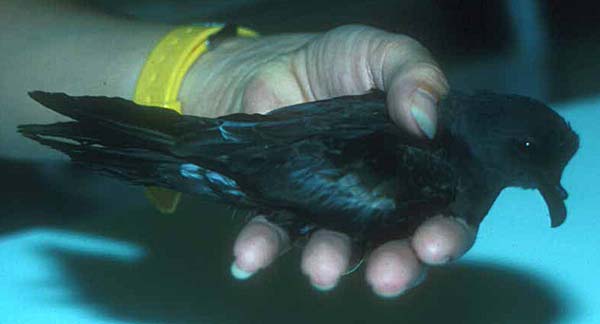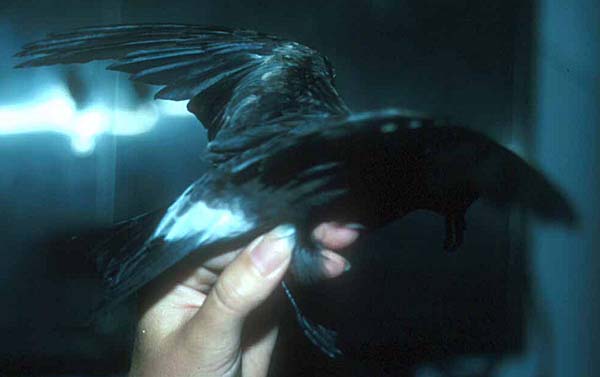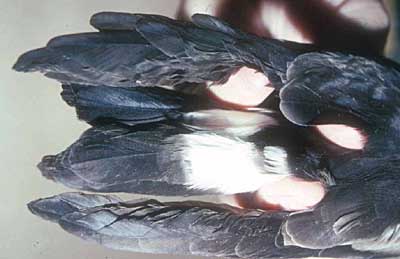| This leaves Wilson's, Wedge-rumped, and White-vented. On the mystery
bird, there is no hint of white or whitish to the base of the outer rectrices.
Further, should this bird have had a white patch on the belly, surely they
would have photographed the underside. And while the mystery bird is smaller
than Leach's, it is not absolutely tiny in the hand. For all these reasons,
I think White-vented is eliminated.
This leaves Wilson's and Wedge-rumped. Wilson's has very long legs with
yellow webs. We can see this but, on the other hand, one might have thought
they'd photograph interestingly colored feet. Probably more important,
the overall tone of this bird is a grayish-black, not black-black, and
I generally find Wilson's to be "black-black" birds. Wilson's has a longer
tail than Band-rumped, and the tail of Band-rumped still is almost as long
as the wings in the specimen (above). The mystery bird has a very short
tail; too short, I think, for Wilson's. So although a bit more tentative,
I think Wilson's is eliminated.
This leaves Wedge-rumped. That is, in fact, what I thought the bird
would turn out to be before I started this analysis. It looks to have a
very short and almost wedge-shaped tail. It looks to be decidedly smaller
than Leach's and even Band-rumped/Wilson's, so the size looks good for
Wedge-rumped. [White-vented is also small but doesn't have this shape of
tail.] The culmen lengths on my two Leach's were 13 and 14mm. Just
'eye-balling' the mystery storm-petrel, the bill looks a tad shorter, maybe
11 or 12mm. That is, in fact, the range of O. t. kelsalli race of
Wedge-rumped that presumably nests in Peru. Finally, I can see very faint
but distinct shaft streaks on the white coverts of the mystery bird. I
have noticed that before on Wedge-rumpeds but no other storm-petrel. I
have never tried to quantify this character and don't know if it is useful,
but it is curious . . .
My own notes from late October 1989 show that Wedge-rumped, and Leach's,
and Band-rumped, were all seen regularly well offshore northern Peru. I
did not see Wilson's far offshore (and in California they are usually fairly
nearshore at pockets of productivity). White-vented was seen only around
the Galapagos on my trip. But Wedge-rumped is an excellent candidate on
distribution as well. |

